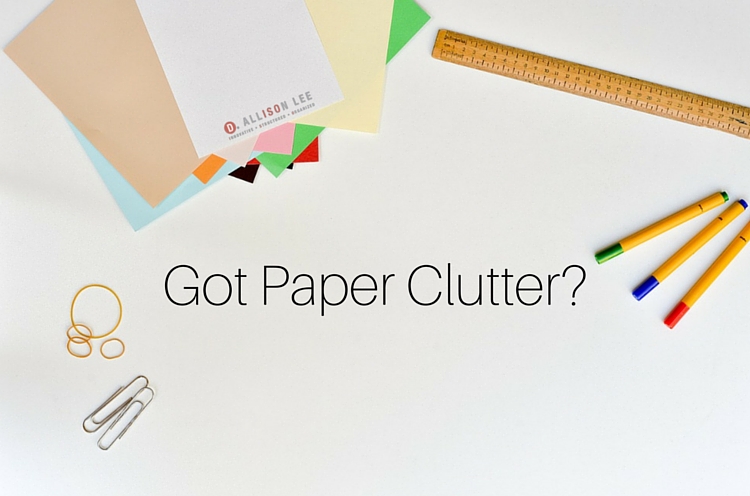
Welcome to Part 4 of the ADHD Paper Solution: Setting up your paper management system. When creating a filing system that stores your paperwork will make you feel confident that you can find your important documents quick and easy which may seem obvious to someone who doesn’t have ADHD. However when you are living with ADHD paper piles, fear, and anxious searching often go hand in hand when you are looking for a particular piece of paper. This week I am going to provide you with my own personal strategies on creating a file drawer for your frequently accessed files and how to use a separate file box for long term document storage. I would like to remind you that many of us (women with ADHD) need a simple approach and keep in mind that everyone has your own style and you may need to adjust my method to meet your unique needs.
Create a File Drawer for Frequently Accessed Files
Create a hanging folder for each file and label it with a label-maker or handwritten label. File alphabetically in your file drawer.
Recommended supplies:One file drawer, hanging files, plastic file tabs, paper labels and label-maker (optional).
Suggested use:Most of my bills are paid automatically, so I do not receive many in the mail. However, I still find it necessary to have one small file drawer for some documents. I could spend time scanning paper and filing on my computer, but for me it is easier to use paper files.
I have one letter-sized file drawer that is only about three-quarters full. I have customized it for my needs. I review files and purge unnecessary paper approximately once a year.
Here are a few examples of types of documents I save and the files I have set up:
-Medical file: Test results, notes and records for medical situations that have not been resolved. Consider signing up for electronic delivery of explanation of benefits and claims information. This information can also be found on your medical insurance website.
-Current tax year file: Paperwork necessary to complete taxes for this year.
-Car records: Receipts from recent car repairs.
-Receipts and warranties: Try to limit the number of receipts you keep and purge this file often.
-Pet file: Records of vaccinations and other medical information.
-Utility file: One paper bill from each of my utility companies with customer service number and account number. This information could also be stored in a computer file.
-Capital gains receipts: Home improvement receipts for capital improvements made to my home. This will vary by state. I move these records into long-term storage at the end of the year.
Use a Separate File Box for Long-Term Document Storage
There are some files you seldom or never access. I recommend storing these files in another location and not in your active file drawer.
Recommended supplies: Bankers box or portable file box, fireproof box or safe.
Suggested use: Here are examples of files I recommend keeping in your nonactive storage file box. I store my long-term storage files on the top shelf of a closet.
-Tax returns and receipts from the last seven years (or less, depending on your tax situation).
-Car records: It’s best to keep car loan documents until the loan is fully paid off and also title documents for the cars you currently own. Be sure to file all repair and service records. You will want to show these to a potential buyer when you sell your car so that the buyer can be confident that your vehicle was properly serviced and that both your vehicle come with an uncomplicated ownership history.
-Official records: Birth and death certificates, adoption papers, marriage licenses, divorce decrees, estate plans, Social Security cards, passports, records of paid mortgages and military discharge papers. I suggest keeping these in a fire-safe box.